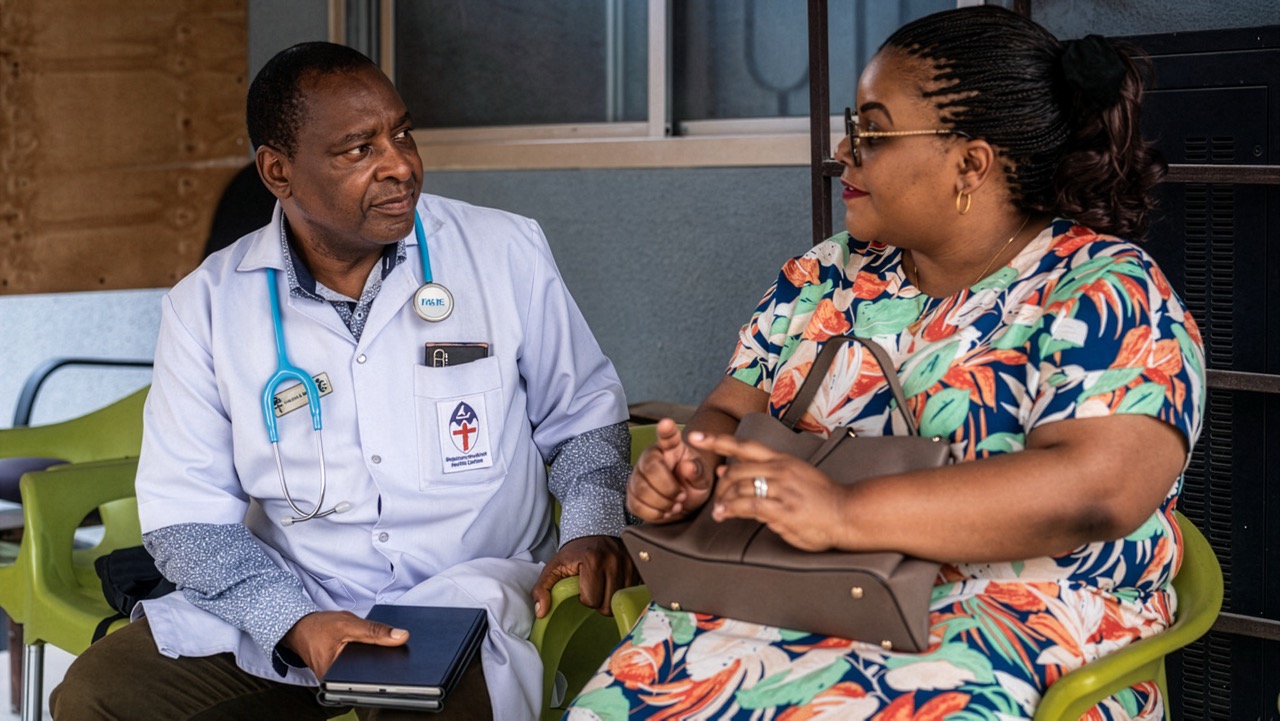The Catalyst Effect: Unlocking innovation for global NCD care through cross-sector collaboration
Noncommunicable diseases (NCDs) – including diabetes, cardiovascular disease, cancer, and chronic respiratory conditions – account for the majority of global deaths. In 2021 alone, they claimed more than 43 million lives – three-quarters of all non-pandemic-related deaths globally. Of these, 18 million were premature deaths occurring before the age of 70, with 82% of them in low- and middle-income countries (LMICs). Today, we are at a critical inflection point in addressing this growing challenge.
NCDs are projected to cost LMICs $7 trillion between 2011-2025, yet less than 2% of global health funding targets these conditions. This gap between disease burden and resource allocation represents one of the most significant blind spots in global health policy today. And solving it requires political will to reimagine how we fund, structure, and sustain care for chronic conditions in LMICs.
Financing: The Political Fault Line
Despite the scale of the NCD crisis, global health financing remains misaligned. Traditional approaches to healthcare financing in LMICs have proven insufficient for the chronic, long-term nature of NCDs. Infectious disease programs benefit from vertical funding mechanisms with clear endpoints, while NCDs require sustained investment in health systems strengthening, continuous medication access, and ongoing patient support for sustainable impact. Compounding this challenge is the contraction of traditional global aid requiring us to explore innovative financing mechanisms that can provide sustainable, predictable funding streams.
Impact Investing: Aligning Expectations and Outcomes
Impact investing represents a crucial innovation in addressing the NCD financing gap. By bringing together investors seeking both financial and social returns with healthcare providers, communities, and local entrepreneurs, we can create sustainable funding models that outlast traditional aid cycles. The key to success lies in aligning expectations from the outset – establishing clear metrics that matter to all stakeholders and creating governance structures that ensure accountability.
But impact investing isn’t just about capital. It’s also about commitment. Mentoring and strategic guidance for investees can be just as important as funding. The investment of human capital and expertise helps entrepreneurs in LMICs build capabilities to scale their businesses and deliver local solutions for NCDs.
When expectations and outcomes are properly aligned, impact investments have the potential to transform healthcare delivery models, making them both financially viable and effective. This alignment supports improved health outcomes that drive economic returns, which in turn enable further investment in health systems.
The Power of Partnerships: Building Systems, Not Just Programs
Overcoming the barriers to NCD care demands more than funding – it requires partnerships that are equitable, have a shared purpose and local ownership. These partnerships must go beyond transactional initiatives and become alliances that have the potential to strengthen health ecosystems.
For long-term impact, it is important that we go beyond government engagement and build partnerships with NGOs, community organisations, and local innovators. The needs of vulnerable communities are not one-size-fits-all. While there are commonalities, each region faces unique barriers. That’s why identifying the right partners is essential. This is the power of shared expertise – not as a top-down transfer, but as a horizontal exchange that strengthens local systems and accelerates innovation.
Over the last three years I have seen this model in action. Sanofi’s Global Health Unit has mobilised over 112 capacity-building programmes in collaboration with 69 partners. We have continually taken stock of our initiatives – learning from challenges and evolving our approach.
What’s clear is that the most effective partnerships are those that begin with aligned expectations, embed local leadership from the outset, and have the backing of government stakeholders. That’s how we move from programmes to systems – and from short-term wins to lasting change.
Thinking Holistically: Ecosystem Approaches to NCDs
It’s important to keep in mind that the future of NCD care in LMICs isn’t just about medication. The path to better health begins with knowledge. Patients need education to manage their conditions. Healthcare workers need training to provide appropriate care. Health systems need robust data to allocate resources and funding effectively. And communities need to be empowered to make informed choices within the constraints they face. Only by addressing these interconnected needs – education, training, data, and empowerment – can we build resilient ecosystems that truly transform NCD care in LMICs.
Today, NCDs are a test of our global health priorities – and right now, we’re failing. To close this gap, we must rethink how we invest – not just financially, but in human capital, local leadership, and long-term partnerships that can help build resilient health systems from the ground up.
NCDs are not just a health challenge. They are a test of our political courage, our strategic vision, and our commitment to equity. The time to act is now.












